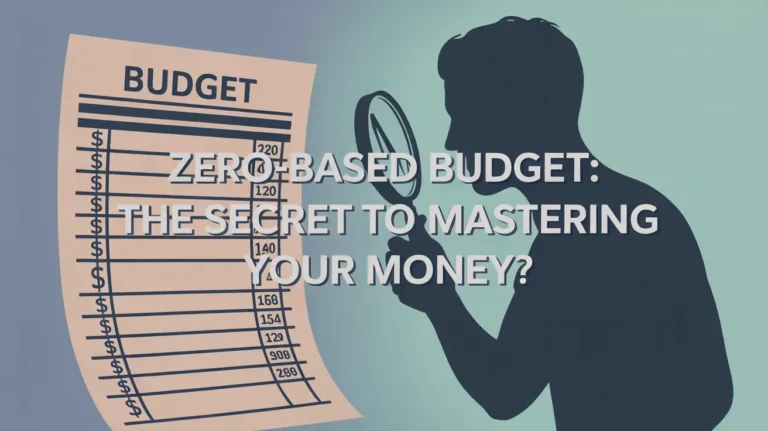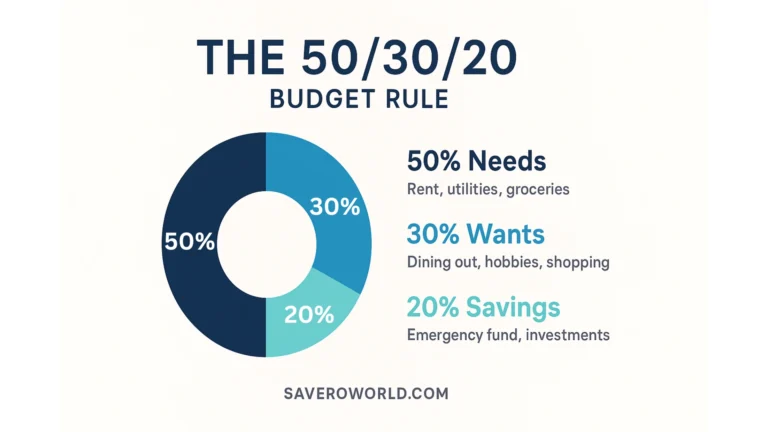How the 70 20 10 Budget Works (and Why It Actually Fits Real Life)

Budgeting often feels heavier than it should. Spreadsheets, daily logging, and strict rules make many people quit within weeks because the process competes with real life. The 70 20 10 budget offers a calmer approach: three clear buckets, realistic numbers, and a structure that works even when costs rise or plans change.
This method respects the way life actually unfolds. Essentials get a generous share so the lights stay on and the fridge is full, savings grow steadily instead of “when there’s something left,” and there is still room for joy and giving. The following guide explains each part in depth, expands the setup steps into actionable playbooks, and shares best practices so the plan feels doable from day one.
What Is the 70 20 10 Budget Rule?

The 70 20 10 budget divides take-home income into three parts: 70% for essentials and monthly spending, 20% for savings and extra debt repayment, and 10% for lifestyle or giving. Essentials include rent or mortgage, utilities, groceries, transportation, insurance, childcare, and minimum debt payments. Savings cover the emergency fund, retirement contributions, investments, and extra payments toward high-interest balances.
This balance works because it accepts that living costs are not what they used to be. Many households cannot fit “needs” into 50% of income, and pushing for that target creates shame instead of progress. By setting a realistic 70% for essentials, the plan remains firm enough to move money forward while flexible enough to survive a tough month.
The 70% Bucket: Essentials That Keep Life Stable

What belongs in the 70% bucket (and what doesn’t)
The 70% bucket contains everything needed to live and work safely and consistently. Typical items include housing, utilities, basic groceries, transport to work or school, insurance, medical essentials, childcare, and minimum debt payments. If a missed payment damages credit, threatens housing, or disrupts basic needs, it belongs here.
Wants do not belong in this bucket even when they feel routine. Streaming subscriptions, takeout meals, entertainment upgrades, and style purchases are important to happiness but not essential to basic function. A useful test is simple: could life continue safely for a month without this item? If yes, it should not be in the 70% category.
Honest sorting creates clarity fast. Reviewing the last two to three months of bank statements and highlighting every true essential reveals the real baseline. That visibility is often enough to spot easy trims and reclaim a few percentage points without major sacrifices.
Fixed vs. variable essentials (why this distinction matters)
Fixed essentials change little month to month and include rent, insurance, and certain service plans. Variable essentials swing with usage and prices and include groceries, fuel, electricity, and water. Fixed items set the floor of the 70% bucket, while variable items provide the best opportunity to regain control.
Small habits compound quickly in variable categories. Planning four simple “repeat meals,” keeping a running pantry list, and batching errands can shave grocery and fuel costs without feeling restrictive. Adjusting thermostat settings a few degrees, using LED bulbs, and unplugging vampire electronics reduce monthly utilities with minimal effort.
Best practices to lighten the 70% load
Quarterly subscription audits, annual insurance and internet quotes, and simple meal planning protect the budget from silent creep. Switching a handful of brand-name items to store brands, using unit-price comparisons, and cooking one bulk meal each week creates savings without cutting joy. For more practical ideas to stretch essentials, explore Frugal Living Tips and test two changes at a time for sustainable results.
The 20% Bucket: Savings and Extra Debt Repayment

Order of operations that keeps momentum high
The 20% bucket fuels long-term stability and peace of mind. A simple, sustainable order of operations works well for most households: build a starter emergency fund ($1,000–$2,000), make extra payments on high-interest debt, contribute to retirement, and set up sinking funds for near-term goals. This sequence prevents emergencies from becoming credit-card debt and keeps motivation alive through visible progress.
Sinking funds deserve special attention because they stop “budget surprises.” Separate mini-savings for car repairs, medical copays, holidays, travel, and insurance renewals make big costs feel routine instead of stressful. A friendly walkthrough lives here: Sinking Funds—What They Are & How to Use Them.
Emergency fund: where to keep it and how to grow it
A high-yield savings account offers safety, instant access, and better interest than standard accounts. Automating a small transfer on payday builds the habit before spending begins. When any bill ends or a subscription is cancelled, redirect that amount into the emergency fund to “snowball” savings without feeling a pinch.
Debt payoff methods: choose the one that fits behaviour
Both the snowball and avalanche methods work if they are sustained. Snowball attacks the smallest balance first and generates quick wins, which is powerful for motivation. Avalanche targets the highest interest rate first and saves the most money overall, which is powerful for efficiency. Behavior wins long term; the method that keeps momentum is the best choice.
Retirement and investing: keep it simple and automatic
Consistent, automated contributions matter more than chasing perfect strategies. Contributing a manageable amount to a 401(k), IRA, or local equivalent creates compounding growth over time. Aligning these transfers with payday keeps savings inside the 20% bucket and reduces the chance of skipping contributions during busy months.
The 10% Bucket: Lifestyle, Joy, and Giving—On Purpose

Why the 10% bucket matters for motivation
Budgets that eliminate all fun rarely last. The 10% bucket functions as a pressure-release valve that protects mental energy and prevents binge spending later. Planned enjoyment—date nights, hobbies, concerts, and small treats—feels better than random splurges because it is intentional, not impulsive.
Using the 10% for giving and values
Many households allocate part of the 10% to tithing or donations that reflect personal values. Giving feels best when it is planned rather than squeezed in, and this bucket provides a healthy boundary. There is pride in supporting causes without risking rent, utilities, or emergency savings.
Investing or saving with 10% in certain seasons
Some seasons call for heavier investing or special savings goals. Redirecting part of the 10% to a taxable investment account, a travel fund, or a family celebration can be motivating. The key is choosing on payday so every dollar has a job and nothing drifts.
RELATED READS:
How to Budget Irregular Income.
Zero Based Budget Complete Guide.
15 Genius Budgeting Hacks.
Step-by-Step Setup: From “Good Idea” to Working Plan

Step 1: Calculate true take-home pay (your real starting line)
Many budgets fail because they start with gross income rather than the amount that actually hits the bank. Take-home pay reflects taxes, insurance, and retirement deductions, so it shows what is truly available. For variable earnings, average the last three months to create a stable baseline that won’t collapse after a slow week.
Knowing the real number turns vague goals into concrete guardrails. It also removes the monthly mystery of “why the math never works out,” which lowers stress. This simple clarity sets up every other step for success.
Step 2: Convert income into the 70/20/10 guardrails
Multiplying net income by 0.7, 0.2, and 0.1 instantly produces three monthly limits. Writing these numbers in a notes app, taping them to the fridge, or pinning them inside a budgeting app keeps the plan visible. If pay is biweekly, two checks generally map to a month; the guardrails still apply.
Guardrails are not handcuffs; they are lanes on a road. Some months finish a little left or right of centre, and that is normal. The key is returning to the lane rather than abandoning the drive.
Step 3: Sort every expense into the correct bucket
Sorting builds honesty and momentum. Essentials like rent, utilities, basic groceries, transport, insurance, childcare, and minimum debt payments enter the 70% category. Emergency-fund transfers, retirement contributions, investments, and extra payments toward debt enter the 20% category. Restaurants, subscriptions, gifts, hobbies, and donations enter the 10% category.
Mislabelling wants as needed is the most common way a budget drifts. Running the “could life safely continue for a month without this?” The test keeps the 70% bucket clean. A clean sort creates confidence because the plan is finally aligned with reality.
Step 4: Automate the 20% and align bill timing
Automation protects progress on busy days and during stressful months. Setting a savings transfer the morning after payday moves money before it can be spent. Splitting the transfer into two smaller moves—payday and mid-month—can feel gentler while preserving the total.
Bill timing also matters. When many bills land before payday, cash flow feels tight even if the budget is sound. Shifting due dates or using a bill calendar smooths the month; free worksheets from the Consumer Financial Protection Bureau help with mapping due dates and pay checks: CFPB Budgeting Tools & Bill Calendar.
Step 5: Track once a month, not every day
Daily tracking burns energy that could be used elsewhere. A simple month-end review answers three questions: did essentials land near 70%, did savings and extra debt reach 20%, and did lifestyle stay around 10%? When one area runs hot, choose one small lever to cool it next month rather than overhauling everything.
This cadence turns budgeting into a habit instead of a chore. A 10-minute review also surfaces quick wins, such as a cheaper phone plan or a subscription to cancel, which keeps motivation high.
Step 6: Use a one-tweak rule to build sustainable change
Trying to fix five things at once exhausts willpower. Choosing a single tweak—switching a plan, meal-planning two dinners, or moving one due date—creates visible progress without burnout. After one month, add another small improvement while keeping the last one in place.
This compounding approach preserves energy and produces steady results. Momentum from small wins often frees dollars in the 70% bucket, which can then be redirected to the 20% bucket for faster savings and debt payoff.
Step 7: Run seasonal refreshes for life changes
Budgets must adapt to new seasons: moving, new jobs, school schedules, babies, or caregiving. A seasonal refresh checks whether the 70% bucket drifted due to higher groceries, gas, or utilities, and whether the 20% bucket is still funded at a realistic level. Adjusting guardrails during these transitions prevents guilt and keeps progress intact.
A short checklist helps: update income, confirm fixed bills, review variable costs, choose one new tweak, and reset automation amounts. This rhythm keeps the 70 20 10 budget resilient instead of rigid.
Common Roadblocks and Practical Fixes
When needs sit at 80–90%, energy should go to three levers: shrinking variable costs, negotiating one or two fixed bills, and adding even a small income stream. Groceries, fuel, and subscriptions are usually the lowest-friction places to start. One or two modest trims, paired with a small side income directed entirely to the 20% bucket, can shift momentum in a single quarter.
When the 20% target feels out of reach, begin at 5–10% and automate it on payday. As debts end, roll those payments into savings until the full 20% is comfortable. For irregular earners, build a one-month buffer and base calculations on a three-month income average so guardrails remain steady.
When guilt arises around the 10% bucket, remember that enjoyment is strategic. Planned joy prevents burnout and expensive impulse buys later. If spending the 10% does not feel right in a particular season, use it for extra investing or a sinking fund; the key is intentionality.
Pros and Cons of the 70 20 10 Budget
Pro: Simple enough to keep using.
Three buckets make the plan easy to remember and quick to review. Fewer categories reduce decision fatigue, which is the main reason many budgets fade after a few weeks. When a plan is simpler than life, it survives life.
Pro: Realistic for today’s costs.
The 70% allocation acknowledges that essentials often exceed half of income in many regions. This realism prevents the “constant failure” feeling that comes from chasing a 50% needs target that is out of reach. Realistic guardrails encourage consistent saving instead of abandonment.
Pro: Built-in balance prevents burnout.
A dedicated 10% for joy or giving keeps motivation high. People stick with plans that protect mental energy, which is why the 10% bucket is a feature, not a loophole. Enjoyment by design is more sustainable than enjoyment by accident.
Con: Tough if essentials exceed 80%.
Households facing very high rent or childcare may struggle to fit within 70%. In these cases, the plan becomes a transition tool: trim variable costs, renegotiate bills, and add income where possible until the numbers fit. Patience and small wins matter most here.
Con: Less granular than zero-based methods.
Some readers prefer tracking every dollar for insight and accountability. The 70/20/10 method trades granularity for ease, which works for many but not all. A hybrid approach—zero-based for a month, then 70/20/10 for maintenance—often provides the best of both worlds.
Con: Requires honest categorization.
Mislabelling as needed inflates the 70% bucket and starves savings. Using the “could life safely continue without this?” The test keeps categories honest. Honesty is not about deprivation; it is about clarity and control.
Conclusion: A Kinder Way to Win With Money
Money confidence grows when a plan fits the way life actually works. The 70 20 10 budget gives enough structure to move forward and enough flexibility to breathe. Essentials are funded without panic, the future receives steady deposits, and there is room for meaning and enjoyment along the way.
Perfection is not required to succeed here; consistency is. Start with real take-home pay, set the three guardrails, automate a small savings move, and review once a month. Those small, repeatable steps turn stress into control and create the kind of financial calm that lasts.






